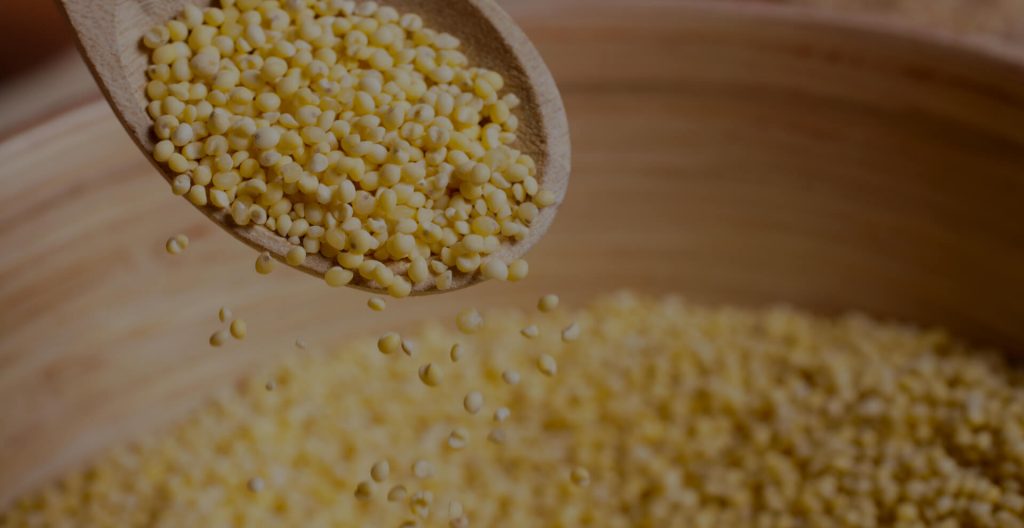

GET TO KNOW THE MILLETS YOURSELF!
1. Try all the millets out: There are 9 types of millets (Browntop Millet, Barnyard Millet, Little Millet, Kodo Millet, Foxtail Millet, Finger Millet, Proso Millet, Pearl Millet, Sorghum) and each millet has its taste and texture. Depending on your taste and dish preferences, some millets may be more suitable for you than others. Therefore, we recommend trying all 9 types of millets and experimenting with them in dishes you eat daily to figure out which millets are right for you. Just because you don’t like one type of millet, doesn’t mean you won’t like any of them! If you have been used to eating dishes made out of rice, wheat, or any other grain, just remember it will take time for you to get used to eating millet dishes.
PURCHASING
1. Avoid polished millets and opt for semi-polished/unpolished millets: There is a chance for polished millets to be adulterated with rice grains (up to 50-60% rice is sometimes mixed with polished millet grains). Furthermore, when millets are polished, the outer layer of the millet which is rich in lignans (compounds responsible for preventing cell damage, cell death, and cancer) is removed.
How to tell the difference? Polished, semi-polished, and unpolished millets can be identified by their colour. Polished millets are pure white, whereas semi-polished and unpolished millets have their own individual colours. In addition, unpolished millets will contain a dot on top of each grain and semi-polished millets will contain a dot on top of some grains. If you’re having a hard time finding the dots, try spreading some millet out on a dark surface and taking a picture on your phone. When you zoom in on your photo, you should be able to see dots if the millet is unpolished or semi-polished.
To learn more about the differences between unpolished, semi-polished, and polished millets, please visit https://svmillets.com/what-are-the-differences-between-unpolished-semi-polished-and-polished-millets/
2. Select millet packages that are well-packaged and tightly sealed.
STORAGE
1. Store in airtight containers in a cool or dry environment. Millets have a long shelf life; up to 1-2 years, if stored in airtight containers in a cool, dry environment such as a cupboard. The freezer could be another option for an even longer shelf life.
COOKING
1. IMPORTANT! Soak the millets before cooking: Since millets contain a high amount of fibre, it is vital to soak the millet for 2-4 hours. As a result, the millet will be more quickly cooked, have a better texture, and be digested more easily.
CONSUMING MILLETS FOR HEALTH BENEFITS
1. Consume all 5 positive millets: These will detoxify all the organs in the body. However, if there is a health issue, then consume more of the positive millet that has been found to benefit the health issue. For example, if one is experiencing blood-related issues, then it is recommended to consume Kodo millet 3 days a week. For the other four days, consume one type of each of the other positive millets per day.
2. Do not mix the 5 positive millets: A certain amount of positive millet is needed to detoxify each organ. If the positive millets are mixed, none of the organs may be detoxified properly because not enough of any one type of millet has been consumed. It is therefore recommended to consume 1 positive millet per day (at breakfast, lunch & dinner) and then to switch to the next positive millet the next day.
Buy S & V MILLETS at https://svmillets.com/shop/

